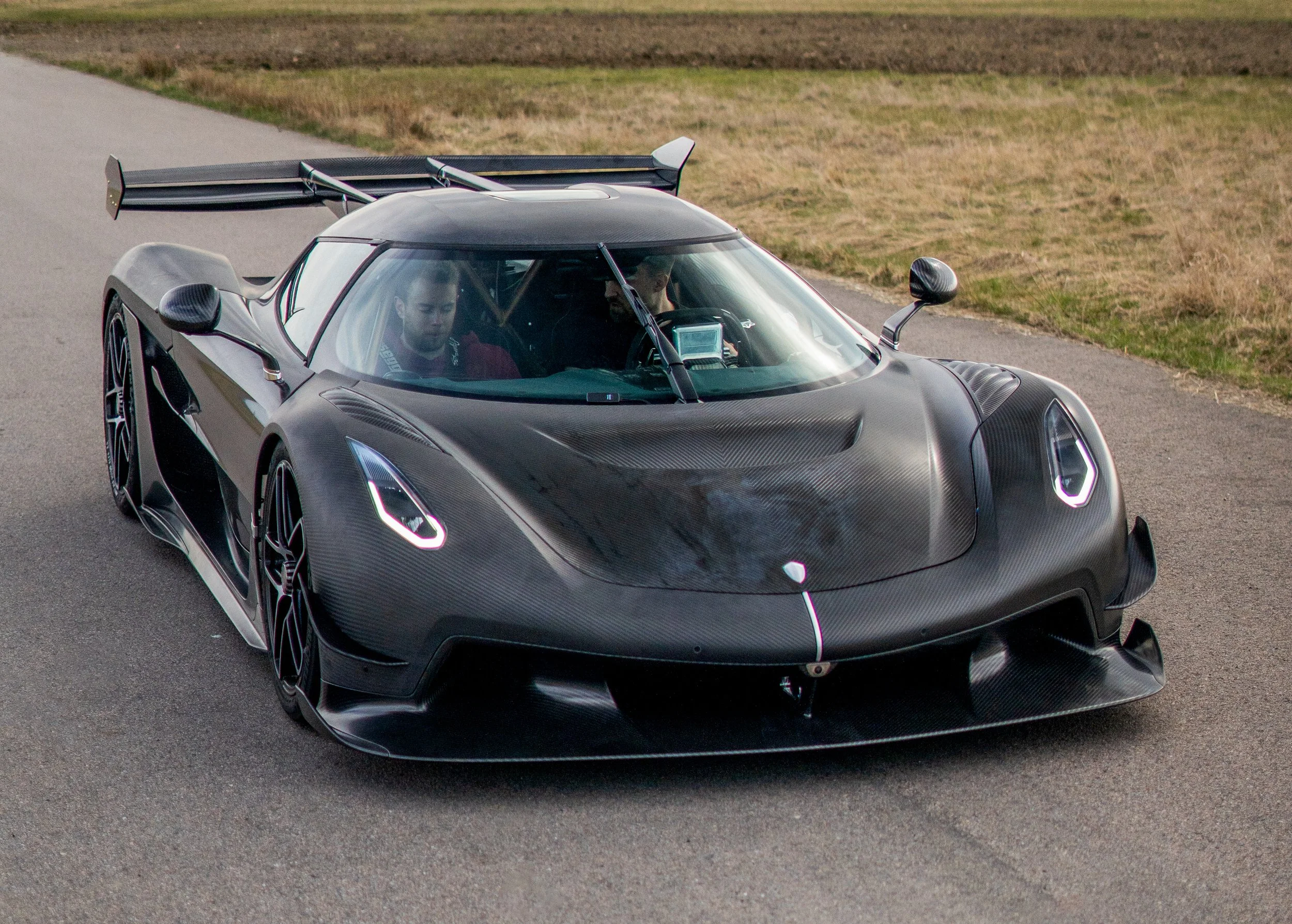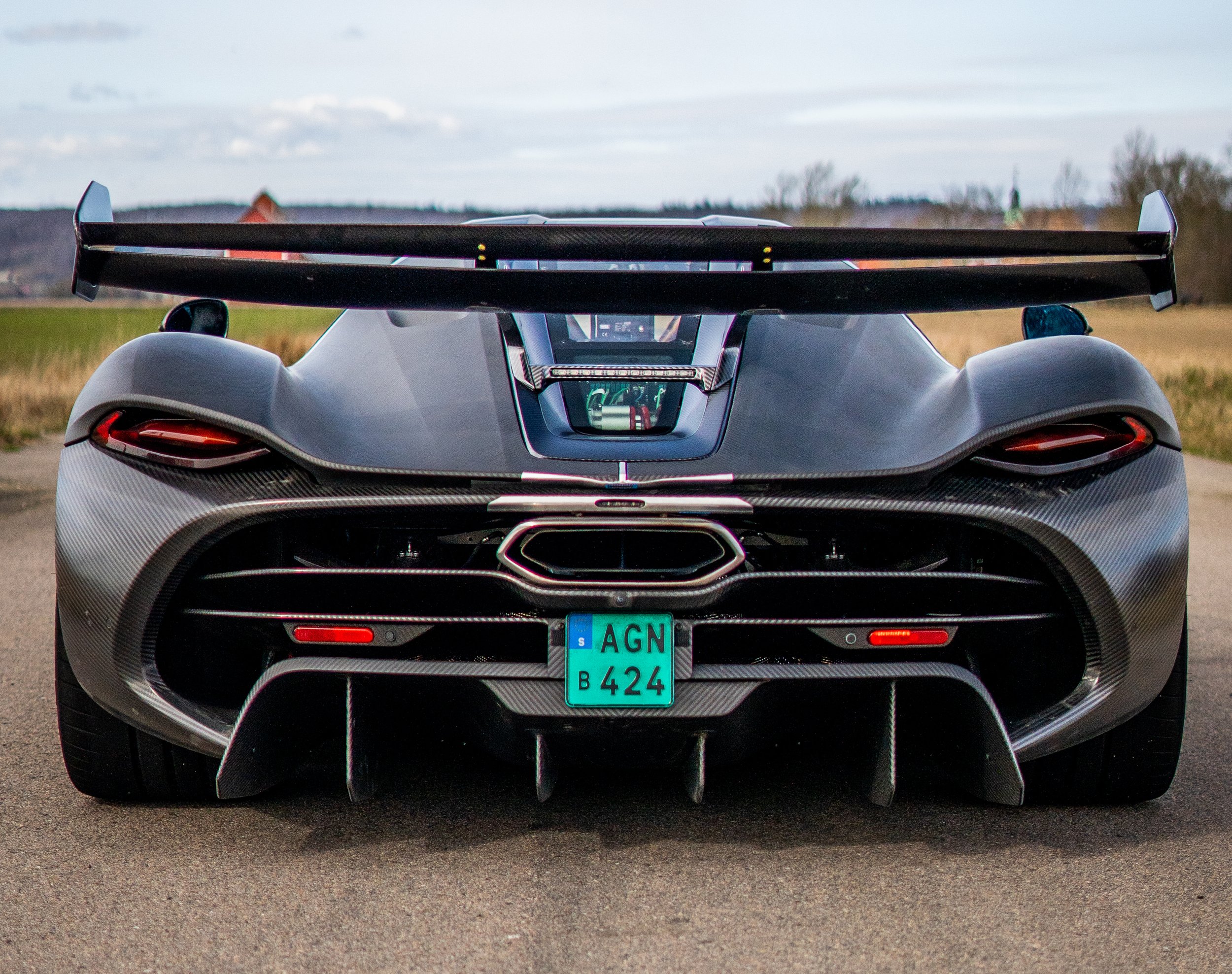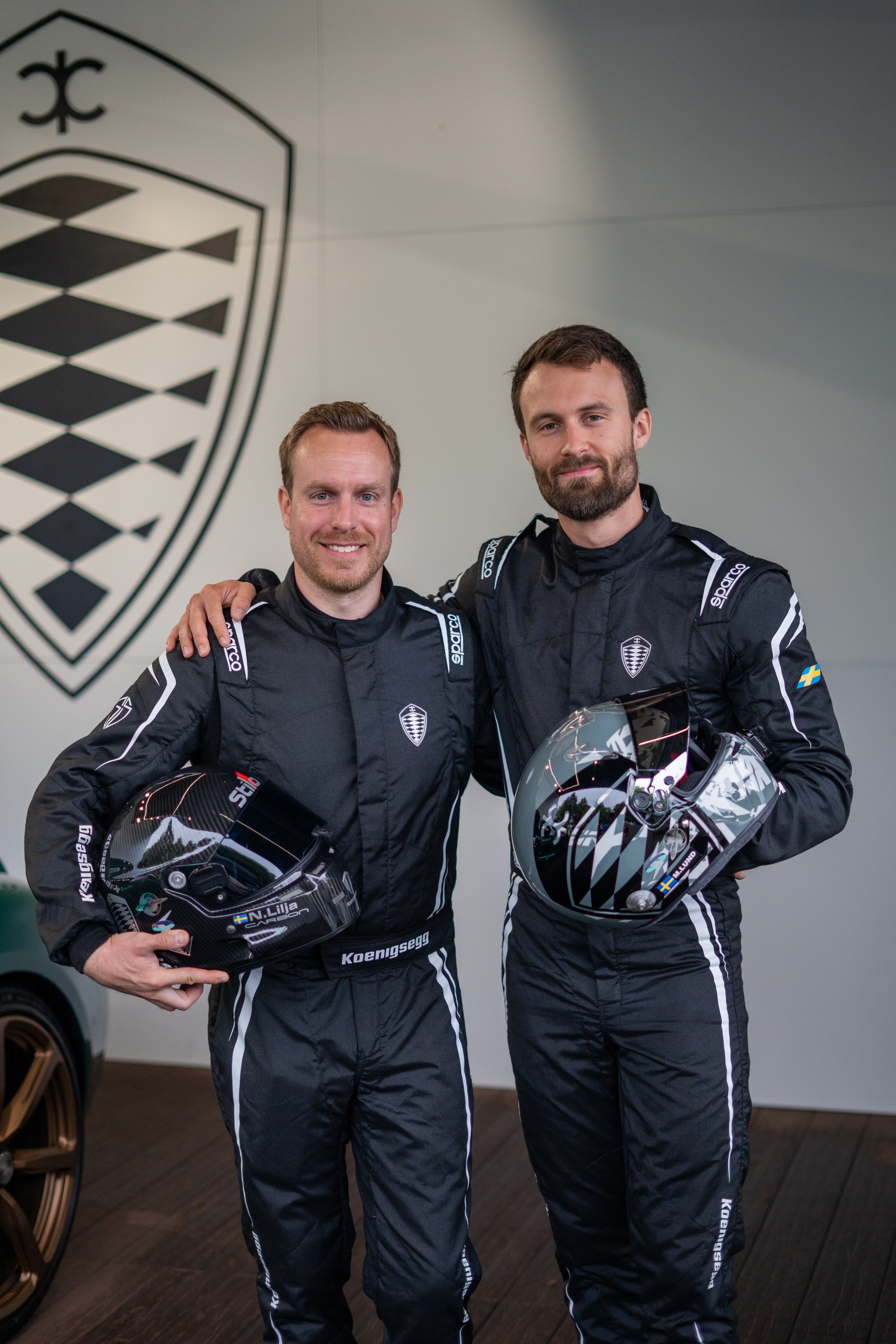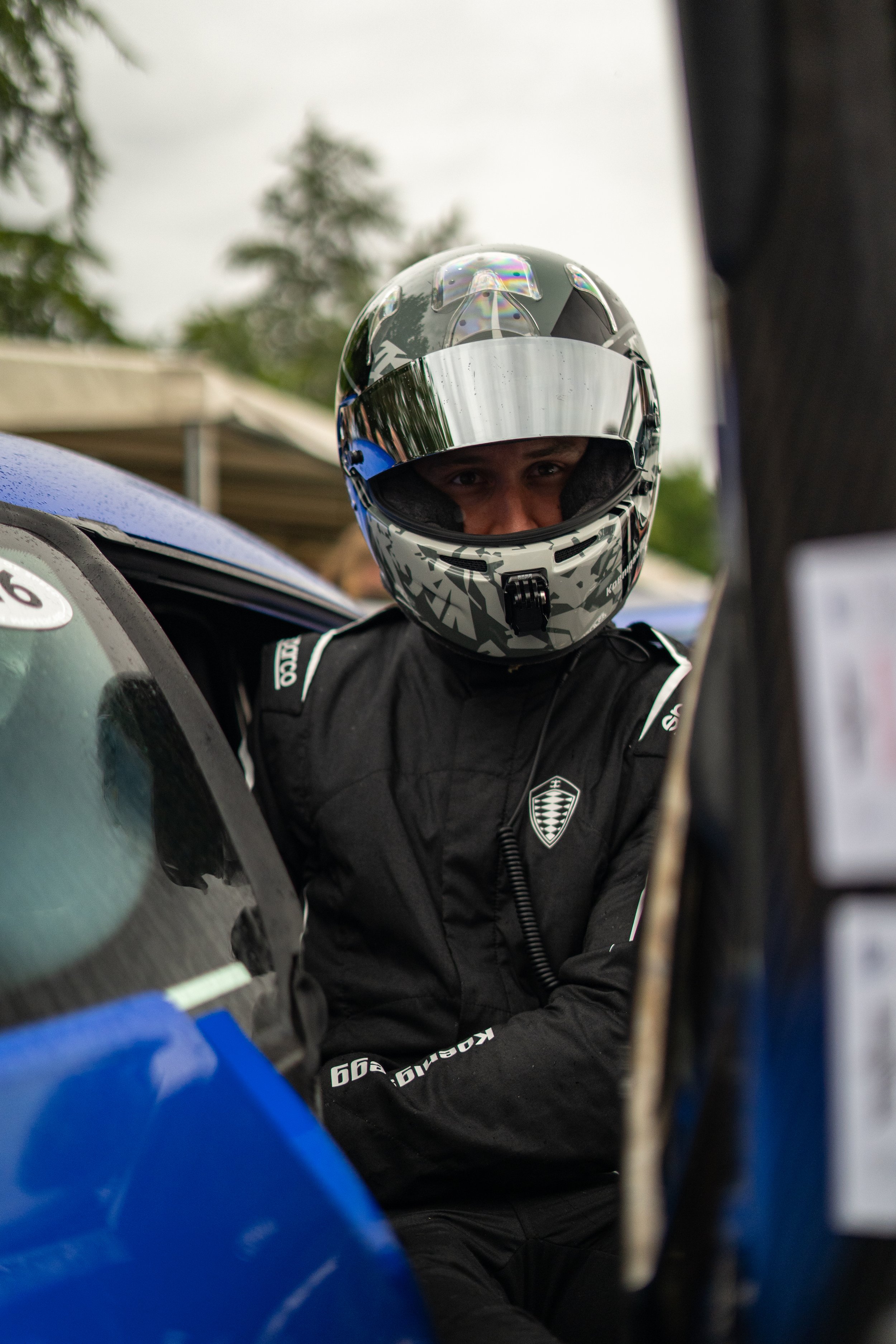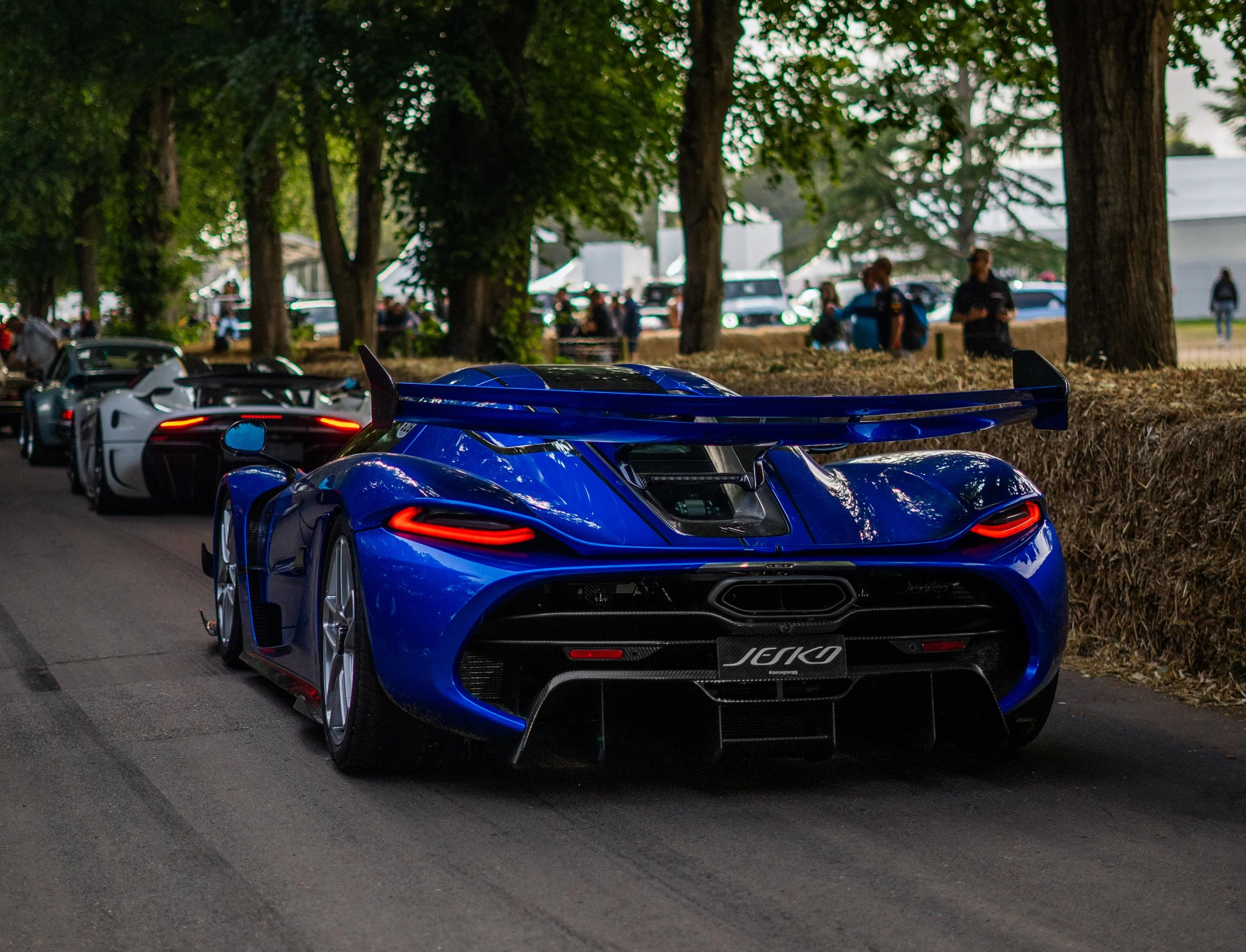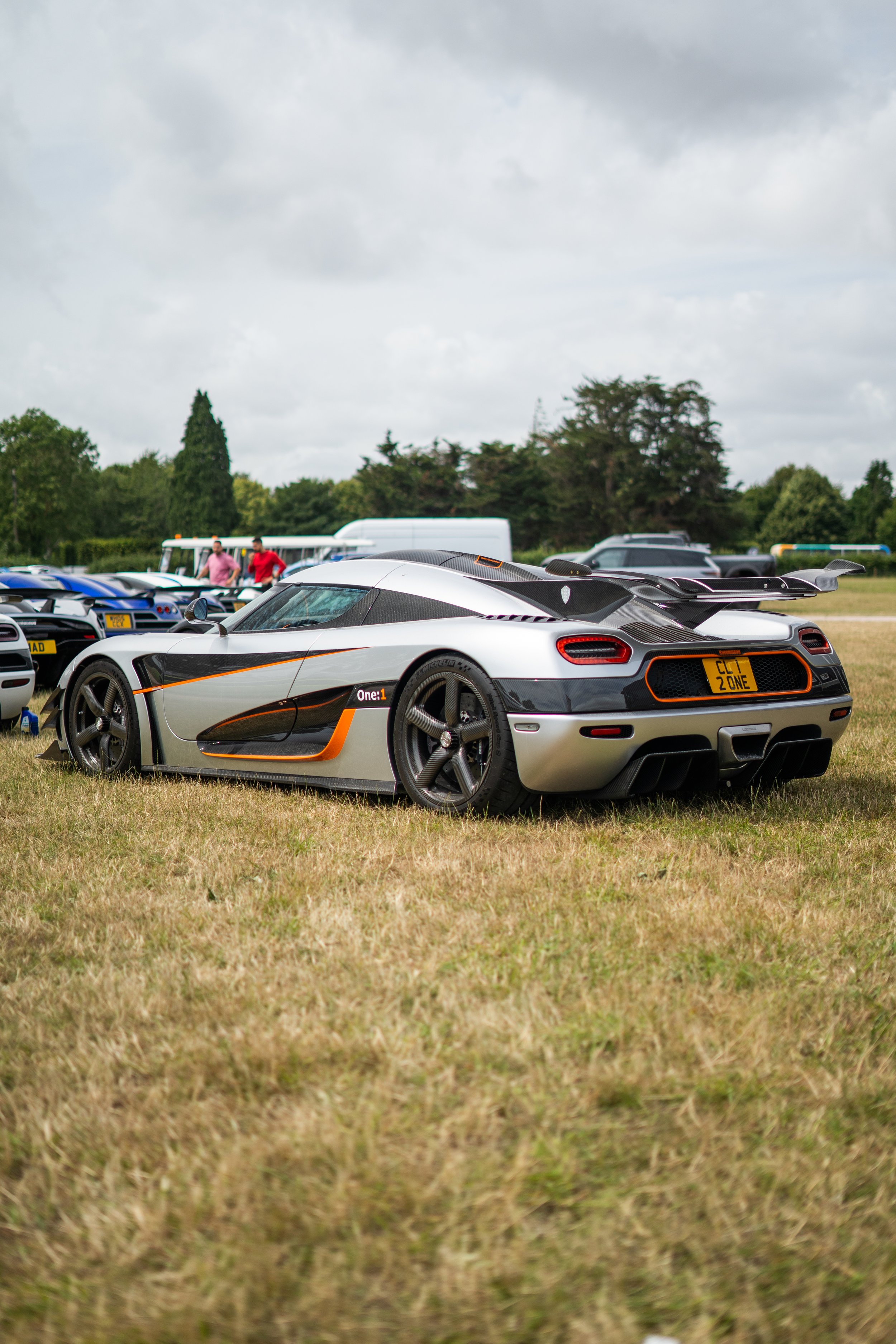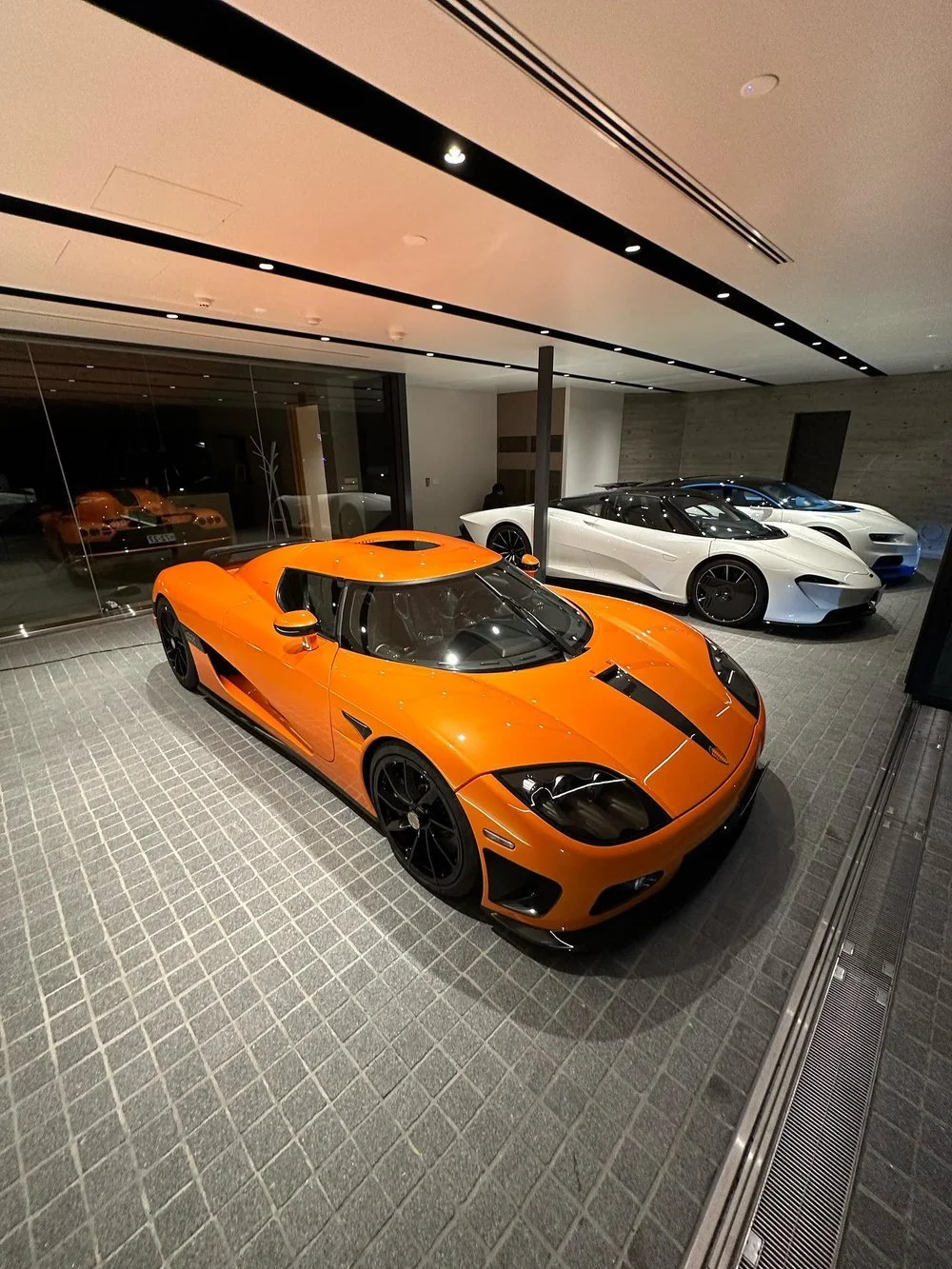The Coolest Job in the World! Interview with Koenigsegg Factory Test Driver Markus Lundh
Markus Lundh pictured in front of the Koenigsegg factory in Ängelholm, Sweden - June 2023
As you enter Valhall Park, a business park on the outskirts of Ängelholm, its aviation history is immediately apparent. In a green space at its centre sits a Saab 35J Draken on static display, long since decommissioned from the Swedish Air Force. Just down the road is Ängelholm’s aviation museum (Ängelholms flygmuseum), and past that sits the active Ängelholm-Helsingborg Airport. For many decades, this area was home to a wing of the Swedish Air Force. There is also a company that builds rockets here. Well, land rockets at least. For about two decades, Koenigsegg Automotive have been building the fastest cars in the world at this location, their campus directly adjacent to the airport.
As I arrive outside the factory, I am quickly greeted by a smiling face exiting from the employee’s door. It’s Markus, someone who, in my opinion, has one of the coolest jobs on Earth. He has graciously agreed to sit down with Egg Registry for his first-ever interview to reveal the ins-and-outs of Koenigsegg!
Egg Registry (ER): Can you introduce yourself and your job title?
Markus Lundh (ML): My name is Markus Lundh, I am a Prototype Test Driver and Technician at Koenigsegg. I do both driving and mechanical work for the cars, developing them and making them great!
ER: That sounds like a dream! How long have you been at Koenigsegg? Can you tell us more about your role?
ML: I’ve been at the company for around 8 years now. I started at production, and was there for about one year. Then, I moved on to Pre-Delivery Testing (PDT), where I worked for three years. In that role, you start to do a lot of driving because you test drive all of the customer cars. I found some really nice colleagues and experienced drivers, which got me more into driving and, after a while, I got more into the development side of things which led itself to prototype testing.
ER: How did you end up working at Koenigsegg? What is your background?
ML: My education is as a car mechanic, which actually took place just up the road from Koenigsegg. I was there for three years of education, after which I worked at a Volvo dealership as a mechanic. A very close friend of mine was working at Koenigsegg at the time tuning cars such as the One:1 and Regera, and he was also helping me with my own car. He said ‘you should work at Koenigsegg’, saying he thought I had what it takes, though I was afraid at the time given Koenigsegg’s high standards.
Markus Lundh, behind the wheel of Koenigsegg Regera #7138, arrives at the factory testing runway.
ER: What does the typical day-in-your-life look like working as a test driver?
ML: Especially in the beginning of the Jesko project, there was a lot of work on the new gearbox. We were taking steps every week, lots of in and out of the gearbox with the team making changes and tuning it. There are so many upgrades made to the car over the development period, from uprights to changing wishbones to interior things, such as the seats, or even aero updated. You get to work on the whole car, which makes it quite fun to me.
ER: As a test driver, how important is it for you to provide feedback to the Koenigsegg engineering team, and how does that collaboration contribute to the development process?
ML: We work really closely with the engineers at all times. There is no step in-between. If we find something, we bring it to the right engineer and find how it can be improved. The things we as test drivers say are the things that our customers feel, so our feedback is very important. If we aren’t happy with, say, traction control, we say something and have it changed, because that is going to change the whole behaviour of the car. Even how the seats feel is important. If we are getting sore in our backs, it’s a sign that the seat design needs to change. We have five development drivers, so we each experience the cars and agree on the solution to various things.
“Christian [von Koenigsegg] is a perfectionist”
ER: Is that process of reaching consensus among the development drivers as to what needs to be changed a part of the reason why development is such a lengthy process?
ML: I would say so. Christian [von Koenigsegg] is a perfectionist, and we try to follow his way of working. Therefore, it can take time for us to be really happy. We want to test every single scenario, too. For example, we test the brakes in the wet, in the dry, and in snow, trying to tick every box.
ER: Are you getting a lot of seat time in the cars on the average day?
ML: Lately it has been more and more. When the cars start to really work as we want them to, we want to drive them as much as possible. We push them, trying to drive in all different scenarios that the customer might use it for, from road driving to track driving, and high speed, of course. Earlier in the projects, there is not as much driving, of course, because the car needs more development before it works as intended.
ER: For Pre-Delivery Testing of customer cars, do you have a specific checklist of things you have to go through?
ML: Yes, but it depends on the model. With the Agera, as an example, it looked a lot different than the Regera. The Regera has a lot of high voltage aspects to test, whereas the Agera was a lot more simple. The Jesko, now, is also a bit more simple than the Regera. We have checklists specific to each car model. Since they are handbuilt, we try to do high speed testing with every car before delivery, including high-speed braking, high-speed acceleration, handling, and benchmark testing, as well as all of the safety functions.
ER: While there is a lot of testing to be done, we can guess there is also a desire to keep the mileage down, especially on customer cars. Is there a certain mileage target for pre-delivery testing?
ML: It’s hard to say, because it varies from car to car. I haven’t been PDT-focused for a few years now, but back in the day we would do 200-300 kilometres maximum on the cars. Other hypercar manufacturers, from what I’ve seen, have similar mileage and also high-speed testing, and we’re in the same range. Pre-delivery testing is really important, because hand-built cars need that type of confirmation.
Markus Lundh behind the wheel of a barebones Koenigsegg Jesko test car (#7252)
ER: There’s a tight-knit but well-known Koenigsegg Spotting community here around the factory. You’re often photographed driving in the snow or to the test track. As a test driver, can you speak to your relationship with the spotters?
ML: Myself, when I was young, I loved these kind of cars. I know I would probably do the same if I wasn’t in the company. However, sometimes, you can get a bit frustrated to be honest, if there are people standing in the way it can be dangerous. As long as they’re safe and have an okay mindset, though, I have no problem at all. The two guys we see the most, Christoffer Frennefalk (@photochristofferf) and Johan Olsson (@theofficespotter), we talk to them every day, sometimes at the gas station saying hi. We communicate when there are certain cars that need to be kept private that are going out to test, asking them to keep the photos private for a while, and they really respect that, which is great.
ER: What is your favourite part of your job? What is the most rewarding part?
ML: I love to learn. Especially some parts that are very interesting, like handling, I just want to learn everything. I enjoy projects where I can follow their progress, feeling something new and seeing how different changes behave. I can really get in touch with my background as a mechanic, but then I found out that driving is really fun, so I have a balance between the two.
ER: Given your background, is there anything about the Jesko that really just wows you more than anything else?
ML: When I saw the uprights in the front for the first time (the part onto which the wheels are mounted and the wishbones attach), I thought ‘wow’. They are so refined, even more so than the Agera and Regera. The parts are beautifully machined and you can feel a really crisp steering response when you drive it.
The rear of a Koenigsegg Jesko test car (#7252)
ER: Can you compare the driving experience of the Jesko to Koenigsegg’s previous flagship, the Agera RS. What impresses you the most about the Jesko in comparison?
ML: The Jesko has more front-end grip, and it is so reactive even at high speeds. You really feel like the front end is doing exactly what you want. The Agera has a little bit less of a front end, with some understeer. Not in a bad way, but simply the nature of the car. The high-speed stability during cornering is improved in the Jesko, and the acceleration is crazy with the new V8 and Light-Speed Transmission. The noise of the new V8 is just amazing, too, and the tighter gear ratios make it a different experience than the Agera RS. Even down to the interior design, from the speaker covers to the piping on the seats, the Jesko is so impressive.
ER: Koenigsegg is famous for straight-line speed, but sometimes people seem to forget that these machines are also fantastic at cornering. I’ve watched you do donuts on the factory runway, so clearly they handle well. Do you think the cornering ability of these cars is an underappreciated aspect of these cars?
ML: I would say so. We haven’t had time yet to show what the car can do. I know what it can do, and I have seen some lap times where we compare to tracks at which we’ve driven, and it’s quick. If we get the opportunity and the right track, we’ll show how fast the car is and people will be amazed.
ER: Is there a desire internally to set lap times, at the Nürburgring, Spa-Francorchamps, or elsewhere?
ML: I know there is. There is nothing planned, timing-wise, but there is definitely a desire to do that.
ER: Would you be behind the wheel for that, or would it be Niklas Lilja?
ML: If they ask me, I’d love to do it. However, we also have Niklas Lilja and Christoffer Nygaard on the team, both of whom have done a lot of racing. I’m not from a racing background, so I’d understand if they got the opportunity, but I would love to do it as well, of course.
ER: Can you describe the level of precision and control you feel when driving a Koenigsegg, possibly in comparison to other performance cars?
ML: The biggest thing is the stability of the car. I’ve driven [other performance cars], I won’t say any brands, but how the car lets go when the grip isn’t there anymore is a big difference. Other cars are snappy, and you have to be really quick to counter-steer. In comparison, all Koenigseggs, but in particular the Jesko, you just turn in and it stays there. You don’t have to fight the car, unless you’re actively overdriving it. It’s very forgiving.
“For everyday use, the [Jesko] Absolut is way better”
ER: How does the handling feel different in the Jesko Attack compared to the Jesko Absolut? Does the Absolut feel less planted and easier to slide around?
ML: Yes, it does. At low speeds, up to 150km/h, they are very similar. Past that, the Jesko Attack is on rails compared to the Absolut. The Absolut still feels safe, but it moves around more, it is quite fun. Before we even drove the cars, Christian said ‘I want the Attack to be a monster on the track, flat out in the corners, but the Absolut you can drift around’.
ER: Which variant of the Jesko is more fun to drive, in your opinion?
ML: For me, the Attack is more fun because going all-out on track is what I love the most. That car is just made for that. The Absolut is fun on track, but isn’t as quick. However, for everyday use, the Absolut is way better. It is more comfortable and more civilized, with a more gentle ride experience.
A Koenigsegg Jesko (#7512) waiting for its final run up the hill at the 2023 Goodwood Festival of Speed
ER: How do you approach and adapt to the immense power and speed of a Koenigsegg during test drives? Surely it takes some getting used to!
ML: To be honest, I just thought about this the other day, because I saw the first Agera RS I ever rode in as a passenger. Even in the passenger seat, I thought that it was unbelievable and there is no way you could control this car. That was the very first thought when my friend drove flat out. However, the more you drive it, the more you get used to it and it doesn’t seem so difficult. You have to recalibrate your brain because there are so many things going on and the acceleration is, well, not normal for a car. It’s strange to say, but you get used to it the more you drive. The car has so much stability and lots of safety features, it gets easier.
ER: When you take the cars out for pre-delivery testing, what specifically are you looking for?
ML: We make sure that all of the systems work, such as ride-height control and active aero, and of course that the engine is running as it should.
ER: With our registry, we could see with the Regera that early on the testing would drag out for quite some time, whereas later they would really pick up the pace with testing and deliveries. At one point later on, the factory spotters were seeing close to one new Regera every day. Is that normal?
ML: Yes, that’s exactly what’s going to happen with the Jesko. Things will ramp up, we’re getting there.
ER: On the subject of our registry of Koenigseggs, do you ever find yourself using Egg Registry as a resource?
ML: The older cars, especially, feel almost like people to me. When we have so many cars, it is hard to keep track of them. So it is really nice to go back to the Registry, especially when there are pictures, and think of the memories with each car. It is nice to have back home with my family to show them different cars.
ER: Final question: What is your favourite Koenigsegg?
ML: The car that really got me into the company was chassis #7106, the development car for the Koenigsegg One:1. Driving that car was a big moment. However, there are so many cars I love. The most fun car I’ve driven is #7036, an orange CCX that is in Japan. It has a shorter ratio gearbox, H-pattern, and is really rewarding to drive.
ER: Thank you so much for sitting down with us today, Markus!
Answers in this interview have been edited for length and clarity. The publishing of this interview, and its content, were approved by Koenigsegg’s Brand & Content Team. We sincerely thank them for allowing Egg Registry to conduct this interview. All photos (except CCX #7036) are by Mika Bains for Egg Registry.


